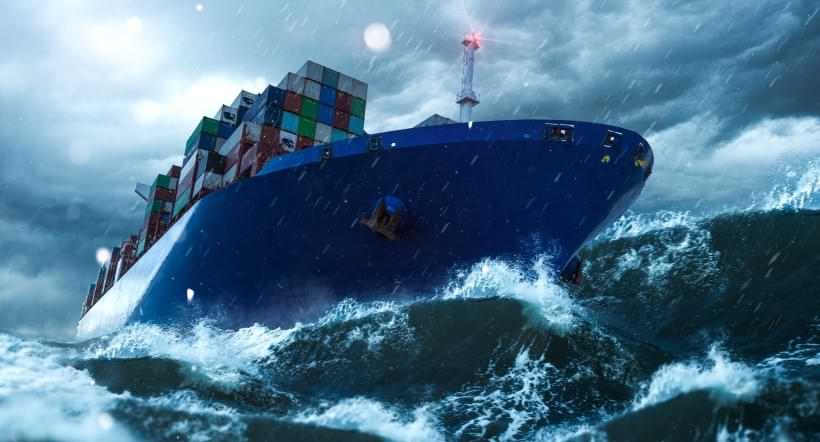One of the most successful alternative trade finance companies has filed for insolvency and is facing possible bankruptcy. The company grew rapidly and dazzled many established professionals.
With a flamboyant CEO, billions in equity funding and hundreds of billions of transactions financed, it looked too good to be true.
A lack of transparent risk assessment and intense risk concentration sealed the company’s fate. Sadly, others will follow.
Content
Success is Built on Solid Foundations
Here at Velotrade, we started our business by securing the foundations first.
We are building a skyscraper and we spend a lot of time and energy, ensuring a solid base for the business to sustain future growth.
We have favoured regulation & risk management.
Technology and mindful workflows ahead of simply chasing sheer scale of growth.
When we recently measured the volume of deals that we declined so far, they exceeded the volume traded.
In the short-term, this sometimes felt like a rugged stance to take. However, in the medium to long-term, it is the only way to achieve a robust platform for success.
Competitors scooped up a number of the transactions that we turned down in the past.
As history tells us, this sadly resulted in some unfortunate outcomes.
To date, we are proud to have a zero-default record and presently no delayed payments.
Brought to you by Velotrade, a marketplace for corporates to access financing.
Never heard of trade finance?
Learn how trade finance works to understand the different parties and benefits.
Challenges and Opportunities Ahead
Trade Finance faces more significant challenges than ever. Covid-19 impacted all facets of international transactions, worsened existing financial vulnerabilities and increased market volatility. However, we cannot blame these difficulties solely on the pandemic. The industry has always been fraught with risks that are reflected in missteps by industry players. Nevertheless, trade finance remains an essential service.
It supports 80 per cent of world trade and helps overcome the complexities of supply chains. That include cross-border payments, shipping and delivery of goods. – IFC part of the World Bank Group.
Trade finance is a desirable source to finance working capital for numerous SMEs based in Asia‘s multiple manufacturing hubs when handled correctly. Find out industries suitable for trade finance and know if it is the solution for your business.
- Transactions can be priced on the supplier’s balance sheet, typically the financially weaker partner.
- Investor’s credit risk sits on the balance sheet of a financially stronger corporate buyer.
- Facilitates long-distance transactions.
- With payment terms of 30, 60 or 90 days, it represents a liquidity source, providing an essential financial service on a cost-efficient basis
Also, trade finance offers healthy returns for investors that are primarily un-correlated to traditional investment asset classes such as stocks and bonds.
Nuts & Bolts
Here are some key steps that are necessary for trade finance to operate smoothly:
A fully-fledged credit assessment: An in-depth credit check to validate both parties’ creditworthiness – buyer and seller. The process includes credit history, balance sheet and cash flow analysis.
Workflow management: A previous transaction history is a fundamental requirement of financing international trade. Any intermediary needs to conduct due diligence to ensure a robust existing relationship is already in place.
Understanding and managing risk: Every international trade involves risk, but this is a manageable transaction component.
The key to success is employing finance and bank industry professionals.
They have the necessary previous experience of managing similar trades and the confidence to make the right choices.
Focus on the process: Trade finance is a complex process involving multiple steps, each of which is dependent on the last.
Short cuts and mistakes can be very costly.
The management team needs to move methodically from A to Z without fail to avoid errors.
Use technology to maximum effect: Technology is a great help in simplifying the trade finance process. It helps ease the administrative burden and allows clients to submit their requirements by completing self-service forms.
The speed and convenience of effectively using technology ensure a more accurate and professional level of service.
Implement industry best practices: The financial industry has developed a series of guidelines around Trade Finance over many years.
There are good reasons to follow them closely.
These ‘best practices’ are highly effective in standardising industry procedures to a professional standard.
Some trade finance companies are regulated by industry bodies such as Hong Kong’s Securities and Futures Commission (SFC). While this is a complex process, it offers significant benefits and reassures a company’s capabilities and confirmation that the authorities have trust in its business operations.
The Growing Role of FinTech
Today, trade finance is being transformed by online FinTech platforms that disrupt the market and impact banks’ business.
This new generation of industry players brings a much-needed alternative financing source and can serve many more customers than banks can support.
However, some FinTechs lack banking experience and skills.
They tend to play down risk management while focusing solely on business expansion.
This can lead to a rapid escalation in business flow, and simultaneously increase the risk of onboarding poor quality deals.
There may be little consequences in the short term; however, further down the road, there can be important consequences if a loan book suffers from significant weaknesses.
Risk management is critical – an old-fashioned mantra that never goes outdated
An element of risk is always present in trade finance deals.
The players involved in a successful transaction tend to minimise the risk while maximising the value.
Therefore, risk management is a pre-eminent requirement for the success of any trade platform intermediary.
Although technology adds a great deal of value, the best way to control risk is to make the right decisions – the old fashioned way! Technology then propagates such risk control to a large volume of transactions.
Experience and caution are vital watchwords
Each trade finance transaction is different and must be evaluated on its merits. For this reason, cautious action and experienced decision making are essential factors.
Successful deals are driven one at a time, and growth can be risky for its own sake.
Managing transactions without the right technological infrastructure can be counter-productive.
It is difficult to keep track of all details for high rate transactions.
There are too many stories in the media about trade finance platforms handling numerous deals without a full audit of risks involved. They hence suffer from poor performance.
Ensuring best practice in trade finance is a prerequisite at all times!


